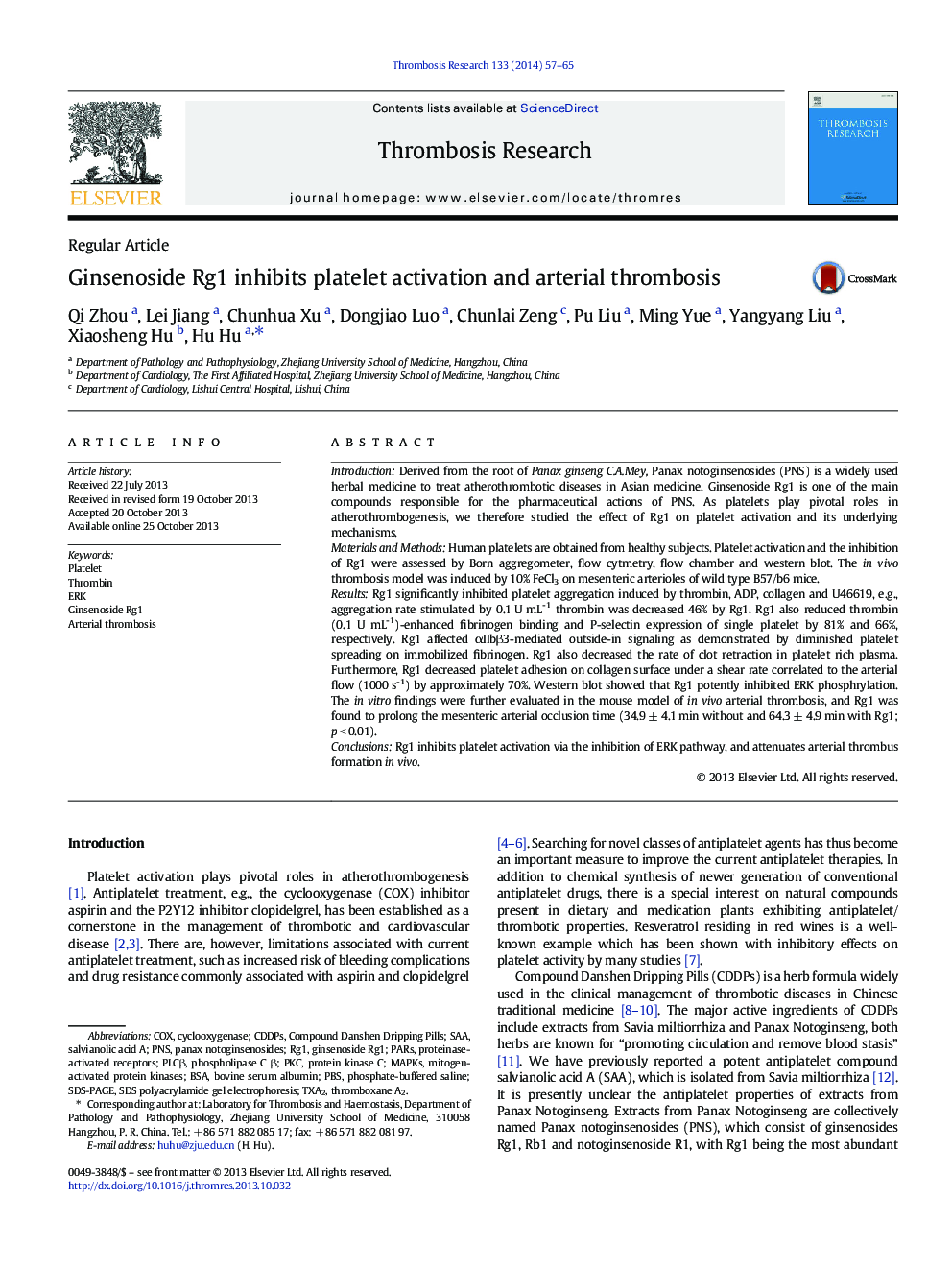| Article ID | Journal | Published Year | Pages | File Type |
|---|---|---|---|---|
| 6001661 | Thrombosis Research | 2014 | 9 Pages |
IntroductionDerived from the root of Panax ginseng C.A.Mey, Panax notoginsenosides (PNS) is a widely used herbal medicine to treat atherothrombotic diseases in Asian medicine. Ginsenoside Rg1 is one of the main compounds responsible for the pharmaceutical actions of PNS. As platelets play pivotal roles in atherothrombogenesis, we therefore studied the effect of Rg1 on platelet activation and its underlying mechanisms.Materials and MethodsHuman platelets are obtained from healthy subjects. Platelet activation and the inhibition of Rg1 were assessed by Born aggregometer, flow cytmetry, flow chamber and western blot. The in vivo thrombosis model was induced by 10% FeCl3 on mesenteric arterioles of wild type B57/b6 mice.ResultsRg1 significantly inhibited platelet aggregation induced by thrombin, ADP, collagen and U46619, e.g., aggregation rate stimulated by 0.1 U mL- 1 thrombin was decreased 46% by Rg1. Rg1 also reduced thrombin (0.1 U mL- 1)-enhanced fibrinogen binding and P-selectin expression of single platelet by 81% and 66%, respectively. Rg1 affected αIIbβ3-mediated outside-in signaling as demonstrated by diminished platelet spreading on immobilized fibrinogen. Rg1 also decreased the rate of clot retraction in platelet rich plasma. Furthermore, Rg1 decreased platelet adhesion on collagen surface under a shear rate correlated to the arterial flow (1000 s- 1) by approximately 70%. Western blot showed that Rg1 potently inhibited ERK phosphrylation. The in vitro findings were further evaluated in the mouse model of in vivo arterial thrombosis, and Rg1 was found to prolong the mesenteric arterial occlusion time (34.9 ± 4.1 min without and 64.3 ± 4.9 min with Rg1; p < 0.01).ConclusionsRg1 inhibits platelet activation via the inhibition of ERK pathway, and attenuates arterial thrombus formation in vivo.
